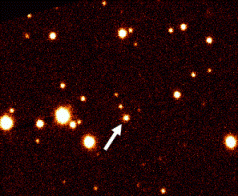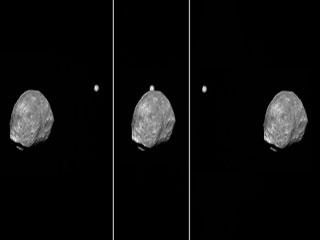
Image taken at the Pan-STARRS 1 Telescope on the night of June 5-6. A University of Hawaii photo
HALEAKALĀ, HAWAII (BNS): A newly spotted comet, presently about 1.2 billion km away from the Sun, is likely to keep its date with Earth in early 2013 when it will be visible to unaided eye in the western sky, according to astronomers.
The comet, first spotted by the Pan-STARRS 1 telescope on Haleakala, Maui, on the night of June 5-6, was reconfirmed by the Canada-France-Hawaii Telescope on Mauna Kea the following night.
Astronomers estimate that the comet, named C/2011 L4 (PANSTARRS), will come within about 50 million km of the Sun in early 2013, about the same distance as Mercury.
�The comet has an orbit that is close to parabolic, meaning that this may be the first time it will ever come close to the Sun, and that it may never return,� said Richard Wainscoat, an astronomer at the University of Hawaii at Manoa, who spotted the object with the help of the Hawaii Telescope.
It is during this time that the comet is expected to be visible low in the western sky after sunset.
The comet will be brightest during February or March 2013 when it makes its closest approach to the Sun. It will pose no danger to Earth.
The astronomers believe that C/2011 L4 (PANSTARRS) most likely originated in the Oort cloud, a cloud of comet-like objects located in the distant outer Solar System. It was probably gravitationally disturbed by a distant passing star, sending it on a long journey toward the Sun.
Over the next few months, astronomers will continue to study the comet, which will allow better predictions of how bright it will eventually get.
 Previous Article
Previous Article Next Article
Next Article












The Indian Air Force, in its flight trials evaluation report submitted before the Defence Ministry l..
view articleAn insight into the Medium Multi-Role Combat Aircraft competition...
view articleSky enthusiasts can now spot the International Space Station (ISS) commanded by Indian-American astr..
view article